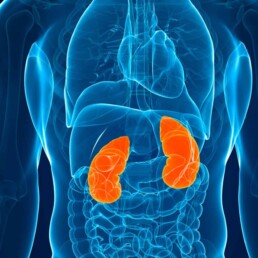Chronic kidney disease (CKD) affects millions of adults in the United States, often progressing silently for years before symptoms appear. Historically, population-wide screening for chronic kidney disease has not been recommended because available treatments were limited and outcomes didn’t clearly improve with early detection.
But that landscape is changing. The introduction of sodium-glucose cotransporter-2 (SGLT2) inhibitors—a class of medications that slows CKD progression and reduces mortality—has shifted the equation. More importantly, lifestyle modifications and early integrative intervention can slow and even reverse CKD when detected at earlier stages. This has reopened the question: At what age does it make sense to start population-wide CKD screening?
A recent study published in JAMA Health Forum sought to answer that very question through a detailed cost-effectiveness analysis. This blog mainly discusses the results of this study.
By Majd Isreb, MD, FACP, FASN, IFMCP
Why Screening for Chronic Kidney Disease?
CKD is common, costly, and associated with increased risk of kidney failure, cardiovascular disease, and early death. Early detection could enable patients to benefit from integrative and lifestyle interventions, as well as therapies like SGLT2 inhibitors, before irreversible kidney damage occurs. But screening programs also require substantial investment. The balance of benefits versus costs is crucial in informing public health policy.
What the Study Found
The researchers used a decision-analytic model simulating CKD progression among U.S. adults aged 35 and older, incorporating real-world data from NHANES and clinical trial results from DAPA-CKD. They compared different strategies of starting CKD screening (ages 35, 45, 55, 65, or 75) and different screening frequencies (one-time, every 10 years, or every 5 years).
Key Findings:
-
Screening at age 55 every 5 years through age 75 was the most cost-effective strategy.
-
It reduced the lifetime incidence of kidney failure requiring dialysis or transplant from 2.4% to 1.9%.
-
It increased life expectancy by 0.13 years on average.
-
It cost $128,400 per quality-adjusted life year (QALY) gained, which falls within widely accepted thresholds for cost-effectiveness.
-
-
Earlier screening (ages 35 or 45) produced larger health benefits but came with higher costs—over $200,000 per QALY gained—beyond conventional U.S. cost-effectiveness benchmarks.
- Later screening (ages 65 or 75) missed opportunities for prevention, with fewer gains in quality of life and avoided kidney failure cases.
What This Means for Practice
This analysis suggests that population-wide CKD screening may be cost-effective beginning at age 55, especially when combined with modern therapies like SGLT2 inhibitors. Of course, the article does not mention early lifestyle interventions and Integrative practices, but to us, these are more important than these medications.
For now, public health recommendations may lean toward deferring screening until midlife, balancing prevention benefits against healthcare costs. But these findings are dynamic: as drug prices fall and new evidence accumulates, earlier screening may become more viable, according to the article.
The Bottom Line on Screening for Chronic Kidney Disease
Screening policies are always about trade-offs—catching disease earlier can save lives, but it also requires upfront investment. This study shows that the current “sweet spot” for CKD screening may begin around age 55, where benefits to population health and healthcare system costs align most closely. The most effective tools currently available are measuring estimated GFR and albuminuria.
Given the enormous burden of kidney disease in the U.S., incorporating CKD screening into routine wellness visits at midlife could become a powerful tool to reduce future dialysis needs, improve survival, and enhance quality of life. Future studies should also look into the screening for CKD and consider the cheaper lifestyle and integrative interventions.







